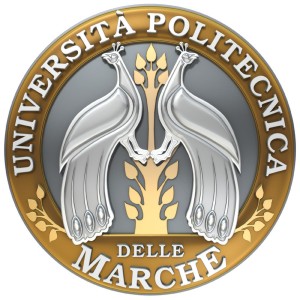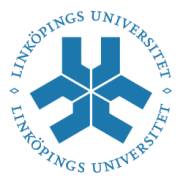Foundation for Research & Technology Hellas (FORTH), Greece
FORTH participates in the project with the Microelectronics Research Group (MRG) of its "Institute of Electronic Structure and Laser" (IESL). MRG was founded in 1986 and since then it has evolved into a unique, in Greece, full-scale research facility in compound semiconductor microelectronics. It has developed a strong expertise in technology and physics of III-arsenide materials, devices and ICs through active participation in ESPRIT (Nos. 1270, 2035, 2289, 3086, 5018, 5031, 9500, 21315, 28998), RACE (No. 1027) and several national STRIDE and EPET RTD programs. Its SiC technology evolved through projects such as BRITE/EURAM 5416, NATO Sfp “HP-HF SiC power devices”, NATO Sfp “SICPIN”, a US Army ERO on SiC power devices and numerous other smaller projects. Its GaN and related compounds technology advanced through 6 IST projects (“QN laser I”, “QN laser II”, “GaNANO”, “AMICOM”, “ULTRAGAN”, “MORGAN”) and 2 major national projects. In particular, it possesses significant expertise in: MBE homoepitaxial (GaAs/GaAs, InGaAs/GaAs, AlGaAs/GaAs) and heteroepitaxial growth of dissimilar materials (GaAs/Si, InGaAs/Si, InGaAs/InP, SiC/Si, GaN/Al2O3, GaN/SiC, GaN/GaAs and GaN/Si), formation of contacts and etching of III-Vs , III-Nitrides and SiC, and fabrication and analysis of high frequency and optoelectronic devices and ICs (MESFETs, HFETs, MSM-photodetectors, MQW-modulators, laser diodes and integrated optical interconnect devices, RF MEMS, MMIC’s). To exploit its accumulated expertise, the group has recently launched a microelectronics services activity providing epitaxial wafers, processing and measurement services. The latter two are ISO 9001 certified. The excellence of FORTH is highlighted by events like the candidency for the 2002 Descartes prize for its work on RF MEMS or references to its work in international journals like Compound Semiconductor (July 2002, March 2003). In 2005 FORTH was among the winners of the Descartes prize for its work on left handed materials.
Laboratory resources:
Clean Rooms: Approximately 200 m2 of class-1000 for MBE and device fabrication. Material Growth: New MBE system (RIBER 32P) for nitrides with NH3 injector and N2 RF plasma sources, set-up for excimer Laser Assisted MBE (LAMBE) and MBE system with two coupled growth chambers (VG 80H/80S) for III-V and SiC-Si. Device Fabrication: wet chemistry sinks, photoresist spinners, UV and deep-UV mask aligners with backside alignment capability, FESEM Jeol 7000 with Raith nanolithography system, e-beam evaporator, RF and DC sputtering, thermal evaporators, rapid thermal annealing, sintering, bonding and wafer thinning and dicing, RIE and PECVD systems. Material Characterization: AFM, SEM and optical-Nomarski microscopes, contactless sheet resistance probe, electrochemical C-V profiling, Hall effect at 300 K and 77 K, DLTS, 14-300 K photoluminescence (PL), micro photoluminescence (μPL), electroluminescence (EL), modulated optical spectroscopies (PR, ER, PT), photocurrent (PC) and photovoltage (PV). Access to the UV Laser Facility (LSF) of IESL. Device testing: C-V, quasistatic I-V, EL spectra and efficiency, RF S-parameter, noise and power measurements up to 20 GHz, on-wafer RF probes.
Role in NANO-RF:
FORTH will employ its custom size sample versatile fab facility to:
- Optimise fabrication process modules for graphene based devices
- Fabricate graphene based active and passive devices
- Contribute to the technologies for the final integration.
Key personnel:
Dr. George Konstantinidis received his Ph.D degree in Solid State Electronics from the department of Electrical & Electronic Engineering of the University of Salford, UK in 1987. Since 1988 he has been working with the MRG/FORTH as a researcher. Since 1991 he is heading the processing research activities of the group and has extensive experience in the processing of wide band gap semiconductors. He is also coordinating MRG's effort in micromachining technology with emphasis on RF-MEMS. He has worked in two European projects BONDEC and PICMOS where he developed techniques for wafer bonding. He has participated in numerous European Union funded projects (~ 2.5MEuros). He was the project manager in the INCO-Copernicus MEMSWAVE project in which novel non-silicon RF MEMS components and circuits were fabricated at FORTH and which was among the runners up of the 2002 DESCARTES prize. He was the scientific contact of MRG in two FP6 NoEs (AMICOM & TARGET) while now he is in running 3 ENIAC projects. Since 1997, he has established an open services laboratory and since 2000 is the ISO 9001 quality system manager. In 2003 he received the Prize "Tudor Tanasescu" of the Romanian Academy of Sciences for his work in the RF MEMS. In 2005, he was a key member of the EXEL team that was among the winners of the 2005 Descartes prize. In 2003 he was elected to the Board of Directors of the European Microwave Association (EuMA) while in 2004 and 2007 he was elected as Vice President of the Greek Micro and Nano Society. He has supervised 7 MSc and 1Ph.D students. He has ~100 publications in refereed journals. He has 5 chapters in books and holds 1 patent.
Dr. Kostis Michelakis was born in Chania, Greece, in 1963. He graduated from the Physics Department of the University of Crete and received his Masters degree in Applied Physics from the same University. He received his PhD from the University of Athens and did his post-doc at Daresbury Laboratory in the UK. He has held posts at FORTH, in Greece and the Department of Electrical and Electronic Engineering of Imperial College London, where he conducted research on submicron-gate high-electron-mobility transistors both on III-V semiconductors and on silicon, with emphasis on the design and fabrication of MMICs. In 2005, he was appointed Research Fellow and Bionanotechnology Facility Manager at the Institute of Biomedical Engineering, Imperial College London, where he set up a microfabrication laboratory, housed within a class-1000 cleanroom. There, he promoted and practised the employment of micro- and nanoengineering methods for biomedical applications. Kostis has worked in the area of micro/nano engineering for over 20 years. He has contributed to more than 50 publications and is a member of the IEEE and the IEEE Electron Devices Society.
Dr Adam Adikimenakis received his PhD in 2009 from the physics department, university of Crete. His thesis was on the epitaxial growth and characterization of novel III-nitride heterostructures for HEMT applications. Since February 2010 he is working in the MRG/FORTH as a post-doc, on nitrides epitaxy with MBE. He has contributed in two European and one national research projects, concerning the growth and development of III-Nitride heterostructures. He is a member of the organizing committee of the HETECH 2010 conference. He is a reviewer in two international journals and he has contributed 22 papers in refereed journals, 2 papers on refereed conference proceedings and about 15 presentations in international conferences.
Dr. Alexandros Georgakilaswas born in 1961 in Athens, Greece. He received his Ph.D. from the Physics Department, University of Crete, in 1990. His thesis was on the epitaxial growth of III-V semiconductors on crystalline Si substrates. Between 1984 and 1995 he worked as a research assistant/associate in the Microelectronics Research Group of the Foundation for Research and Technology-Hellas (FORTH) in Heraklion, Crete, Greece. In 1987 he was at Thomson-CSF, Paris, France and in 1991-1992 at the University of Maryland, College Park, MD, USA. Since September 1995 he is a faculty member of the Microelectronics Research Group of FORTH and the Physics Department of University of Crete, where he currently holds an associate professor position. He currently runs 4 national and 2 European research projects concerning the development by Molecular Beam Epitaxy of novel GaN and InN based heterostructure and nanostructure materials enabling advanced sensors, electronic and optoelectronic devices. He has contributed 96 research publications in refereed journals, two book chapters and holds 4 technical patents-applications.






